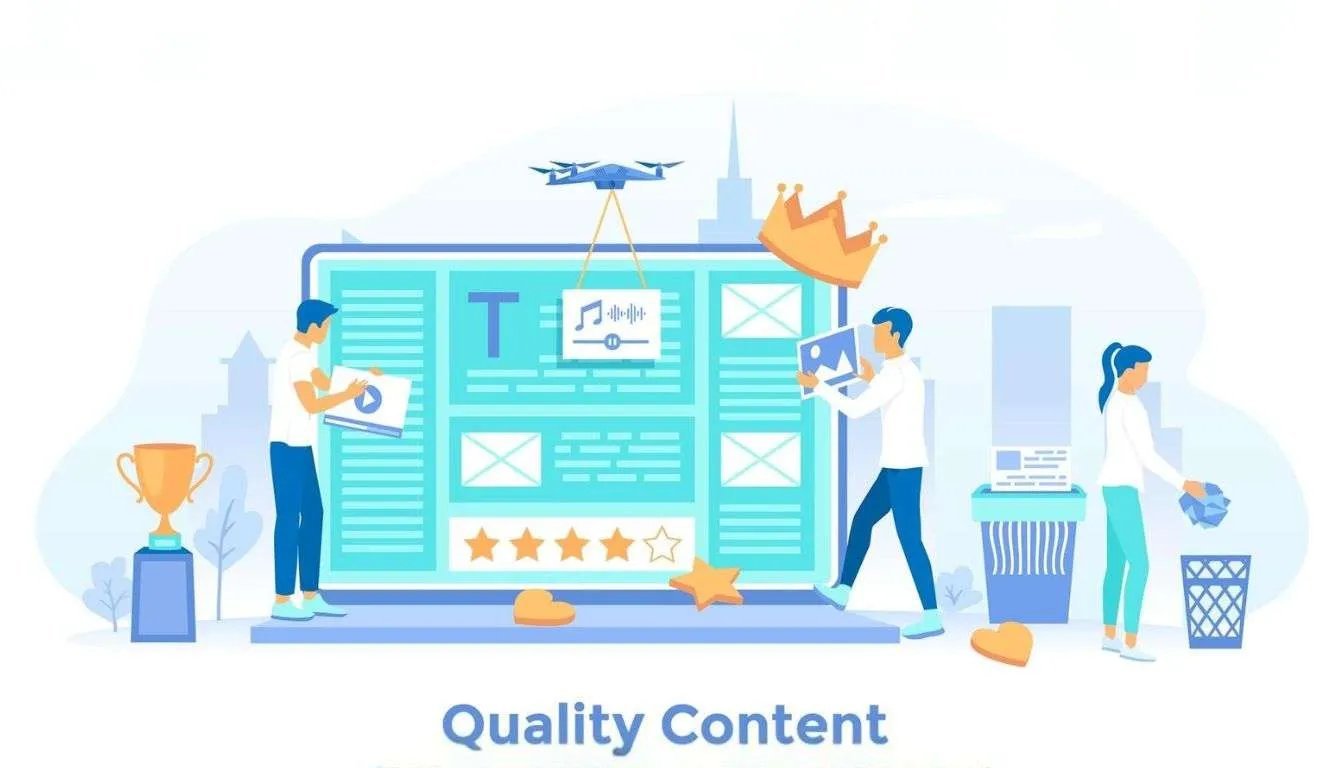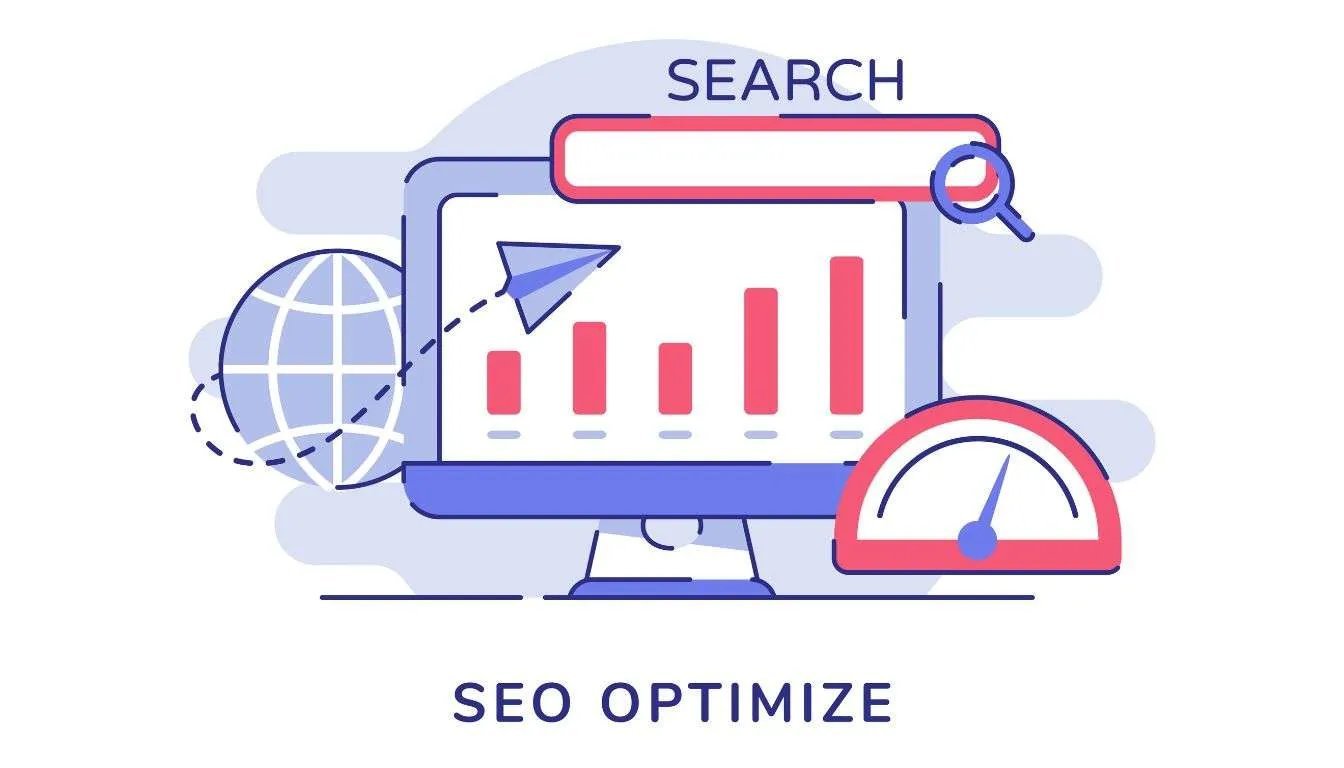Affiliate Disclaimer: Some of the links on this site are 'affiliate links.' This means if you click on the link and purchase the item, we may receive an affiliate commission.
Are you just starting out in affiliate marketing and feeling overwhelmed by the world of SEO? You’re not alone. Writing blogs that actually rank can seem like a mystery, but it doesn’t have to be. By focusing on essential blog writing techniques, you’ll not only improve your SEO but also attract the right audience. Think of it as building a bridge between what people are searching for and what you have to offer. With the right strategies, you can drive traffic, boost rankings, and establish your authority in the niche.
Key Takeaways
- Write for people first, then search engines. Keep your tone authentic and helpful.
- Use clear, engaging headlines and subheadings to guide the reader through your content.
- Prioritize quality over quantity. Offer real value with well-researched information.
- Keep paragraphs short. Break up text to make it easier to read.
- Include bullet points or numbered lists when explaining key details or steps.
- Use simple, specific terms rather than fluffy, vague language.
- Answer common questions directly and early. Think about what your audience is searching for.
- Add visuals or examples to create a stronger connection with your reader.
- Optimize for snippets by answering questions in concise, one- or two-sentence responses.
- Make sure every piece has a clear purpose and call to action, guiding the reader to their next step.
For a deeper dive into effective blogging strategies, check out resources like this YouTube video.
Understanding the Importance of Blog Writing Techniques
When it comes to successful affiliate marketing, nailing your blog writing techniques can make all the difference. A well-written blog isn’t just a collection of words—it’s an opportunity to connect, engage, and ultimately convert your audience. The foundation of effective blog writing lies in balancing creativity with SEO, making your content both relatable and discoverable.
How SEO Enhances Visibility
Imagine crafting the perfect blog post, only for it to sit unnoticed in the vast ocean of the internet. That’s where SEO steps in—it acts as your spotlight, guiding the right audience to your content. With search engines being the starting point for many people’s online activity, optimizing your blog writing techniques is vital to secure a prime spot on search results.
By aligning your content with Google’s latest algorithm updates, such as prioritizing user intent and authoritative sources, you not only improve your chances of ranking but also build long-term trust. It’s like baking a cake; the right ingredients in the right proportion result in a perfect finish. Keep keywords natural and relevant—like mentioning “blog writing techniques” when discussing your approach—to avoid overstuffing.
Curious to know more about what makes blogs so important for your brand’s visibility? This article provides a detailed overview you’ll find useful!
Why Quality Content Matters
You might have a perfect keyword strategy, but if your content falls flat, you won’t keep readers around. Quality content is much like a welcoming handshake—it sets the tone, establishes trust, and opens the door for deeper engagement. People don’t just read blogs; they experience them. If your writing feels forced, unhelpful, or overly robotic, your audience will bounce faster than a rubber ball on a hard floor.

High-quality, engaging content gets your readers to stick around longer, signaling to search engines that your site is worth ranking. Plus, it helps you establish yourself as a trusted voice in your niche. From personal anecdotes to actionable tips, every element should add value. And when you offer solutions or answer pressing questions, you’re not just another blog—they’ll remember you and, most importantly, come back for more.
If you’re wondering how to elevate your blog content further, check out these tips for fresh and engaging ideas.
The balance between content quality and SEO finesse isn’t just a nice-to-have—it’s a must-have in affiliate marketing. Are you ready to transform your blog into a reader’s go-to destination?
Conducting Effective Keyword Research for Affiliate Marketing Blogs
If you’re serious about ranking your affiliate marketing blog, mastering keyword research is non-negotiable. Think of it as the GPS for your content—it helps you figure out what your audience is searching for so you can meet them halfway. Done well, keyword research isn’t just about throwing terms into a blog post; it’s about creating a foundation for targeted, meaningful content that drives traffic and conversions.

Identifying Primary and Long-Tail Keywords
Understanding the difference between primary and long-tail keywords is the first step. Your primary keywords are the main phrases you’re targeting. These are often short, high-volume terms like “affiliate marketing” or “blog writing techniques.” They set the tone for your content but often come with stiff competition.
That’s where long-tail keywords come in to save the day. These are more specific, longer phrases like “how to write effective affiliate marketing blogs” or “tips for blog writing techniques in 2024.” While they have lower search volumes, they’re more targeted, making it easier to rank and attract the right audience.
Think of it this way: primary keywords are like a megaphone that broadcasts to everyone, while long-tail keywords are like a one-on-one conversation with someone who’s genuinely interested. By combining both, you’re casting a wide net while still reeling in the right fish.
Need some inspiration to refine your keyword strategy? Check out this guide on Mastering Keyword Research for SEO for deeper insights.
Tools and Techniques for Keyword Research
Getting the right tools can make or break your keyword research strategy. Luckily, there are plenty of powerful resources available to turn you into a keyword-researching pro. Here are some of the top picks:
- SEMrush: This is like your Swiss Army Knife for keyword research. SEMrush helps you analyze search volumes, competition levels, and even what your competitors are ranking for. The data it provides can guide you to pick profitable keywords for your niche.
- Ubersuggest: Created by Neil Patel, Ubersuggest is an excellent tool for beginners. It provides keyword suggestions, search volumes, and competition levels while offering insights into related terms to broaden your reach.
- Google Keyword Planner: Perfect for those on a tight budget. It’s free, reliable, and gets straight to the point by showing essential metrics like search volume and competition for keywords in your niche.
To get the most out of these tools, start by brainstorming a list of topics you’d like to rank for—think about what your audience would naturally type into Google. From there, plug these ideas into your favorite tool and look for terms with good search volume but low competition. Don’t forget to keep an eye on search intent, as it tells you whether your audience is seeking information, looking to buy, or comparing products.
For more tips on how to perform proper keyword research, take a look at this complete guide to sharpen your efforts.
Incorporating effective keyword research isn’t just about boosting rankings—it’s about building a bridge to connect with your audience more meaningfully. The better you can align with what they’re searching for, the more likely they’ll engage, trust, and stick around.
Structuring Your Blog for SEO Success
Your blog’s structure isn’t just about following a format—it’s the foundation of your SEO strategy. Think of it as organizing a bookshelf. When everything is in its place, it’s not only visually appealing but also makes it easier for your audience (and search engines!) to find what they’re looking for. Here’s how you can make your blog a well-oiled machine for maximum visibility and reader engagement.

Crafting Engaging Titles and Headlines
Your title is the gateway to your content; it’s what catches the eye in search results and makes someone want to click. A powerful, engaging headline should spark curiosity, solve a problem, or promise value—and of course, it should include your primary keywords naturally.
For example, instead of a generic title like “Blog Writing Tips,” you could use “10 Proven Blog Writing Techniques for Affiliate Marketing Success.” It’s specific, includes a primary keyword naturally, and answers a clear need.
When crafting titles, don’t overlook the significance of title tags. These are the clickable headlines in search engine results and play a key role in ranking. Keep them under 60 characters for optimal display, and place the primary keyword closer to the front. Tools like Yoast SEO can help you preview title tags and meta descriptions effectively.
Using Subheadings to Increase Readability
Subheadings (H2s and H3s) break your content into digestible chunks, helping both readers and search engines understand your blog’s structure. Think of them as signposts guiding your reader through your post. By using descriptive subheadings that include keywords naturally, you not only improve SEO but also grab attention.
For example:
H2: Essential Blog Writing Techniques for Beginners
H3: How Keywords Can Unlock Better Rankings
Notice how the H2 introduces a new section, while the H3 narrows down the topic further. This hierarchy isn’t just visually helpful—Google loves it too.
Lists, bullet points, and short paragraphs also enhance skimmability. Readers often scan content before deciding to dive in, so make their first impression count. Need more ideas? This guide on blog site structure offers insights that can complement your strategy.
Visual Content and Multimedia
A picture might be worth a thousand words, but in blogging, it’s also worth better engagement and SEO. Incorporating visuals like images, videos, and infographics does more than make your blog pretty—it keeps readers on the page. That time spent increases dwell time, signaling to search engines that your content is valuable.
Best practices for visual content include:
- Optimizing images: Compress images for fast loading without sacrificing quality. Use descriptive file names and ALT tags with keywords—for example, “blog-writing-techniques-infographic.jpg.”
- Embedding videos: Whether it’s a tutorial or an interview, videos make your content more dynamic. Just make sure they’re relevant and hosted on a trusted platform like YouTube.
- Using infographics: These are perfect for summing up data-heavy sections in a visually appealing way.
For instance, if you’re explaining keyword research techniques, an infographic showing the process step-by-step can save your readers time and confusion. Learn how to incorporate multimedia effectively with resources like this article.
Strategically structuring your blog isn’t just about pleasing search engines—it’s about offering your audience a seamless, enjoyable experience. When readers can find answers effortlessly, they’re more likely to stick around, share, and keep coming back!
On-Page SEO Techniques for Blog Optimization
When it comes to ranking your blog posts, on-page SEO is one of the most effective strategies to optimize your content for search engines without alienating readers. It’s like decorating a storefront—you can have the best items inside, but if you don’t present it well on the outside, people might not notice. Let’s look at a few techniques to make your blog shine for both users and search engines.

Optimizing Meta Titles and Descriptions
Meta titles and descriptions are the first impression your blog makes in search engine results. These tiny snippets don’t just tell search engines what your post is about—they also determine whether someone clicks on your link or keeps scrolling. Think of them as your blog’s handshake—a firm, friendly grip will make a difference.
Here are some tips for writing effective meta titles and descriptions:
- Include your primary keyword early. For instance, if you’re writing about “blog writing techniques,” make sure it appears naturally within your title and description.
- Make it concise but intriguing. Meta titles should be under 60 characters, while descriptions work best between 150-160 characters.
- Highlight the value. Tell readers what they’ll gain from clicking your link—solve their problem, answer their question, or spark their curiosity.
- Avoid clickbait. Don’t promise something your content doesn’t deliver. Search engines and readers alike will penalize you for it.
For deeper insights into crafting high-quality meta tags, this guide to on-page SEO is a great resource.
Internal Linking Strategies
Internal linking is like creating a helpful map within your website. Not only does it guide your readers toward more content they’ll love, but it also helps search engines understand your site’s structure and context. A blog post without internal links is like a neighborhood with no roads—difficult to navigate.
Here’s how you can create a solid internal linking strategy:
- Link to relevant content. If you mentioned keyword research earlier, connect it to a related post that dives deeper into the topic.
- Use descriptive anchor text. Instead of writing “click here,” be specific, like “learn more about blog writing techniques.”
- Keep links to a minimum. Adding too many links can overwhelm readers and dilute your content’s SEO value. Stick to 1-2 links per 300 words.
For example, when discussing on-page SEO, linking to additional resources, like this comprehensive guide by SEMrush, can add immense value for readers seeking more details.
Internal linking doesn’t just improve SEO rankings; it enhances the overall reader experience, encouraging visitors to stay longer and explore more of your content.
Mobile Optimization and Page Load Speed
In today’s mobile-driven age, if your blog isn’t optimized for mobile, you’re essentially turning away half of your potential audience. Imagine losing customers because your shop’s door is too small—sounds silly, but the same concept applies online.
Here’s why this matters:
- Google’s mobile-first indexing. Search engines prioritize websites with a mobile-friendly design, so if your blog isn’t optimized, you’ll get left behind in rankings.
- User experience matters. Slow-loading pages frustrate users. Research shows that a delay of just one second can drop your conversion rates by 7%.
To improve mobile optimization and page speed:
- Use responsive design templates. Most blogging platforms, like WordPress, offer options that adjust your content layout based on screen size.
- Compress images and files. Speed up your blog by reducing file sizes for visuals without sacrificing quality.
- Test your site’s speed. Use tools like Google’s PageSpeed Insights to identify and fix any bottlenecks.
For actionable tips and examples on mobile optimization, check out this helpful guide to on-page SEO.
Keeping your blog technically optimized ensures an enjoyable experience for your readers while showing search engines that your site is worth ranking. It’s the type of win-win everyone can appreciate!
How to Promote Your Blog Content Effectively
Promoting your blog content is just as important as writing it—if not more. You’ve invested time crafting engaging posts, and now it’s time to ensure they reach your audience. Effective promotion amplifies your blog’s visibility, encourages engagement, and drives traffic. Let’s explore different strategies to get your blog noticed.

Leveraging Social Media Platforms
Social media is one of the strongest tools in your promotion toolkit. Think of platforms like Facebook, Twitter, and LinkedIn as virtual bulletin boards where you can announce, share, and showcase your blog content. But how do you use them effectively? Here are some steps:
- Tailor your message to each platform: Facebook loves detailed posts and visuals, while Twitter thrives on short, punchy updates. For LinkedIn, focus on professional, industry-relevant insights. Cater your content to each audience.
- Create eye-catching visuals: Posts with images or videos are much more likely to grab attention than plain text. Use tools like Canva to design engaging graphics that tie into your blog’s message.
- Engage with your audience: Reply to comments, ask questions, and participate in conversations. This interaction humanizes your brand and encourages people to check out your blog.
- Use hashtags wisely: Include relevant hashtags to increase the discoverability of your posts. For example, if you’re showcasing blogging tips, hashtags like #ContentMarketing or #BloggingTips can help.
- Schedule posts regularly: Consistency keeps your content top of mind. Tools like Hootsuite let you schedule posts across various platforms.
For more ideas on promoting your blog via social media, check out this resource on How to Promote Your Business Blog.
Collaborating with Fellow Bloggers and Backlinking
Blogging doesn’t have to be a solo venture. Building relationships with fellow bloggers not only creates community but also opens doors for collaboration and backlinking opportunities, both of which boost your blog’s authority. But how do you approach this?
- Engage with their content: Start by reading and commenting on blogs in your niche. Offer genuine insights, and leave thoughtful comments—it’s a great way to get noticed.
- Propose guest blogging: Pitch ideas to other bloggers for guest posts. This not only introduces their audience to your content but also allows for natural backlinks to your blog.
- Ask for backlink exchanges: If you’ve linked to someone’s content in your blog, let them know. Often, they’ll return the favor.
- Join blogger communities: Platforms like Reddit (check out this post on successful blog promotion strategies) or Facebook groups dedicated to blogging can help you connect with others in your field.
These collaborations don’t just improve your ranking; they help you establish a reliable network of peers who can vouch for your expertise.
Incorporating Email Marketing
Have you considered how powerful email marketing can be for blog promotion? Your email list is more than a collection of names—it’s a direct line to people already interested in what you have to say. Here’s how you can make the most of it:
- Send newsletters: Share your latest blog posts with your subscribers. Add brief summaries and include links to drive traffic.
- Create exclusive offers: Share bonus content or downloadable resources related to your blog post topic. This gives your readers more reason to open your email.
- Personalize your emails: Address readers by their first names and customize your content based on their preferences or past activity.
- Encourage sharing: Add a call-to-action (CTA) at the end of your emails asking your subscribers to share your blog with their friends or colleagues.
For a strategic approach to email marketing and blog promotion, take a look at 21+ Proven Strategies for Blog Growth.
Promoting your blog effectively takes time and effort, but each strategy builds upon the other to enhance your reach and make your content resonate more with readers. Through consistent action and fine-tuning, you’ll start to see your hard work pay off!
Your Go-To FAQ Guide for Writing SEO-Optimized Blog Posts
What are the best ways to choose keywords for a blog post?
Focus on long-tail keywords with moderate search volume and clear user intent. Use tools like Google Keyword Planner or Ahrefs. Pick keywords your audience is searching for, and make sure they align with your topic.
How can I make my blog posts more engaging while optimizing for SEO?
Write for people first, search engines second. Use conversational language, short paragraphs, and plenty of visuals like images, infographics, or videos. Break up text with headings and bullet points for easy scanning.
Does the length of a blog post affect its SEO ranking?
Yes, to a degree. Longer posts (500+ words) tend to rank better because they cover topics in depth, but quality beats quantity every time. Don’t fluff up the content—stay relevant and useful.
How important are backlinks for a blog’s SEO?
Backlinks are a big deal. They show search engines that others trust your content. Aim for backlinks from authoritative, relevant sites. You can build these by guest posting or creating shareable content.
Should I update old blog posts for SEO?
Definitely. Search engines love fresh content. Update older posts with new data, better visuals, or updated keywords to boost relevance and ranking.
What are some mistakes to avoid when optimizing blog posts for SEO?
Avoid keyword stuffing—that’ll hurt your ranking. Also, don’t use clickbait titles that don’t match the content. Slow-loading pages, missing alt text on images, and broken links can also negatively impact SEO.
How do I optimize images for a blog?
Compress images so they load faster and use descriptive alt text—it helps with search engine ranking and accessibility. Use proper file names like “chocolate-cake-recipe.jpg” instead of “IMG1234.jpg.”
Is internal linking really that important?
Yes, it’s key. Internal links help readers navigate your site and keep them there longer. Plus, it signals search engines about the structure of your site and keeps authority flowing between your pages.
What role does mobile-friendliness play in SEO?
A huge one. Most people browse on mobile devices, and Google prioritizes mobile-friendly pages in its rankings. Use responsive design and make sure your site loads quickly on phones.
Can using videos in a blog post improve SEO?
Absolutely. Videos boost dwell time on your page, which search engines consider a positive ranking factor. Just make sure the video is relevant and has a clear purpose.
Are meta descriptions necessary for every blog post?
Yes. Meta descriptions might not be a direct ranking factor, but they strongly impact click-through rates. Write concise, compelling summaries that urge people to click.
How do I optimize for featured snippets?
Answer common questions clearly and concisely in your blog. Use lists, tables, or text summaries. Structured content increases your chance of being picked for the snippet box.
What’s the best way to write effective headings for SEO?
Include your target keyword naturally in your headings (especially H1 and H2). Keep them concise yet descriptive and use them to outline the flow of your blog.
How often should I post blogs to boost SEO?
Consistency is key. Posting one well-researched blog weekly is better than pushing out low-quality posts daily. Stick to a schedule that works for you and prioritize quality over quantity.
Do social media shares help with blog SEO?
Indirectly, yes. Social shares increase visibility and can lead to more backlinks, boosting your overall SEO performance. Include share buttons to make it easy for readers to share your blog.
Final Thoughts
Mastering blog writing techniques is your gateway to making a genuine impact in affiliate marketing. By focusing on clarity, intent, and providing real value, you’ll not only enhance your SEO ranking but also nurture trust with your audience. These strategies unlock opportunities to connect meaningfully, drive consistent growth, and establish authority in your niche.
Apply these techniques consistently, and watch as they transform your blog into a valuable resource. Your effort now lays the foundation for sustained visibility and future success. Remember, every post is a chance to build relationships that go beyond mere traffic—it’s about creating a loyal community.

